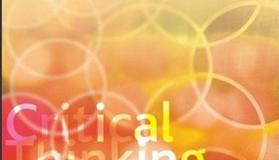Skill 2: Identifying the Structure of an Argument
Critical thinking focuses on ‘argument’. If you areable to detect the main argument, you are better able to direct your attentionto the salient(relevant) material. This in turn enables you to direct yourreading to the most relevant material, and to save time by reading moreefficiently.
a position or point of view;
an attempt to persuade others to accept that point of view;
propositions given to support the point of view.
| Authors have a position, or point of view that they attempt to persuade their audience to accept. |
| Propositions are provided to support the conclusion.
|
reasoning | A line of reasoning is a set of propositions, presented in logical order. It should be ordered so that it leads clearly and logically from one proposition to the next. |
| The conclusion would normally be the position that the author wants you to accept. However, it is possible that the conclusion stated does not support the position the author is advocating. |
Example 1:
Longer prisonsentences should be introduced. Heavy punishments deter criminals. Currentpenalties for crime are too lenient and don’t deter criminals. Since prisonsentences were reduced, crime has increased. Victims need to see thatperpetrators of crimes are punished.
Example 2:
Increasing prisonsentences is not the way to stop crime. Crime was high even when punishmentswere more weighty. Prison teaches people how to be more skilled as criminals.Criminals who are imprisoned are more likely to take part in increasinglyserious crime when released. Most crime is committed by people who areilliterate and lack work-related skills. Education rather than punishment isneeded.
Activity: Read through thefollowing passages and identify the structure of the following arguments.
Passage 1:
We should investmore in space travel. Many discoveries have come about through space travel. Itis important for us to learn more about the universe we live in. The fuelneeded for space travel may not be around for much longer so we should use itwhile we have the chance.
Passage 2:
We should stopinvesting in space travel. Space travel is expensive and the costs far outweighthe benefits. There are much more urgent projects that need investment morethan space travel. Better alternatives for fuel for space travel may beavailable in the future.


